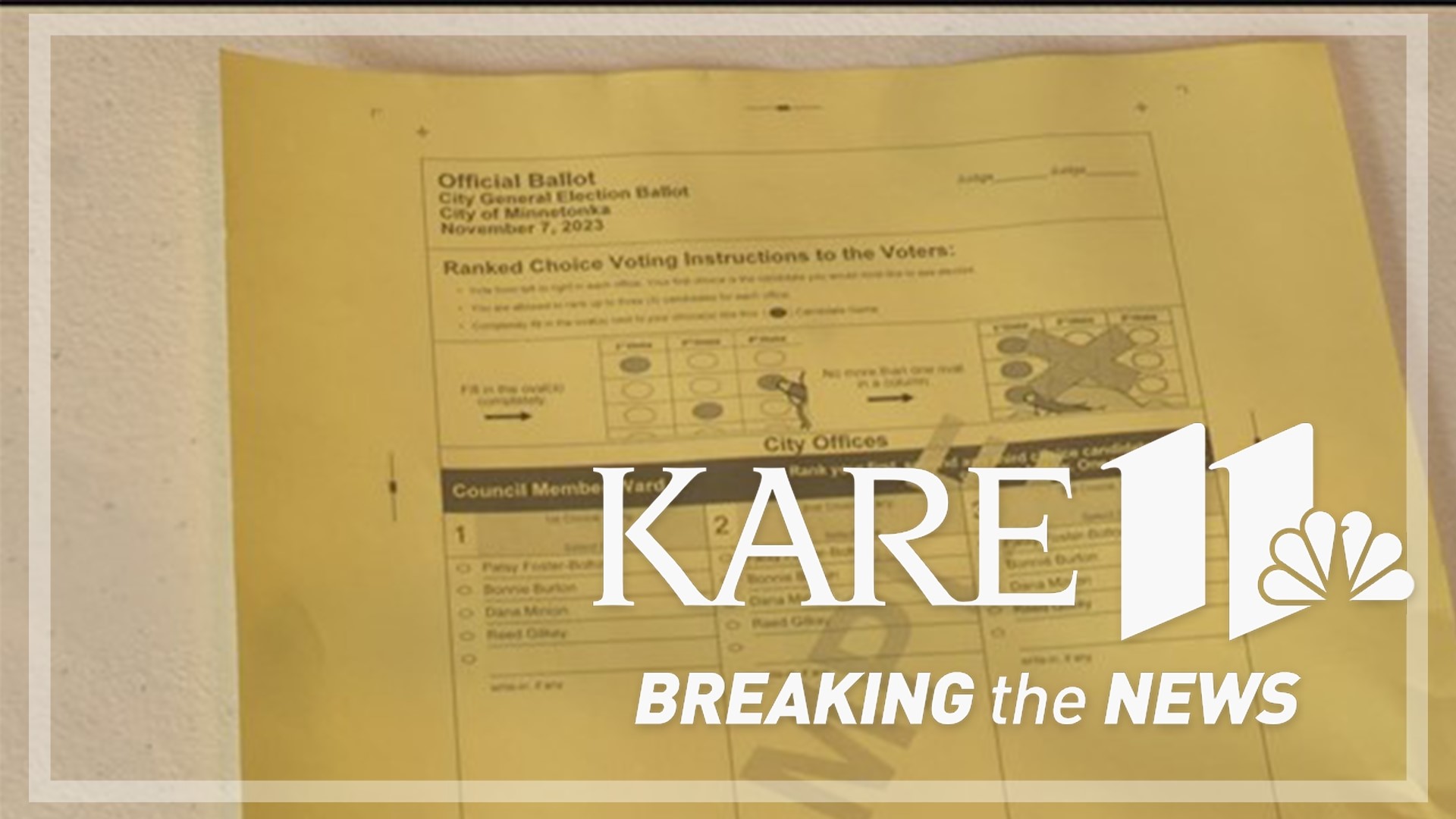MINNETONKA, Minn. — Three years ago, Barb Westmoreland campaigned to move Minnetonka to ranked-choice voting. This year, she's campaigning to keep it after a passionate group of opposition led by Ellen Cousins collected 1800 signatures to successfully put the issue back on the ballot.
"We feel it’s complex, it’s costly, it’s confusing," Cousins said.
"I thought it was the best idea for our city I’ve ever heard of," Westmoreland said.
Ranked choice voting is a method where voters rank their preferences in a given race. If the top vote-getter receives a majority, they win. If not, candidates are then eliminated one by one in an instant run-off, round by round.
The way ranked choice voting works in Minnetonka is you can make a first choice, second choice and third choice on your ballot. After the ballots are counted, if no one has a majority, the lowest vote-getter is eliminated and they're re-counted. But if your top three choices get eliminated -- your ballot is no longer counted moving forward.
That has been a key criticism of ranked-choice voting. In Minneapolis' last mayoral race, by the time Jacob Frey won in the final round with 70,000+ votes, more than 18,000 ballots were no longer counted.
"That's not a democratic system. That's not how we've done things in the past and it's certainly not democratic," Cousins said.
"I think change is hard for some people," said Westmoreland, who was surprised by the backlash to ranked-choice voting.
Minnetonka has only used it in one election prior to this year -- 2021.
"The city survey after said that people understood it, it's easy, it's efficient, it saves the city money. And we increased voters by 50%," Westmoreland said.
The method is touted for giving voters a chance to support a lesser-known candidate they feel passionate about, while still supporting a "fall-back" option as a second choice.
Besides Minnetonka and Minneapolis, Saint Paul, St. Louis Park, and Bloomington also use ranked-choice voting.
But the question on the ballot in Minnetonka essentially is whether it was a failed experiment.
"We feel that people need to concentrate on who to vote for, rather than how to vote," Cousins said.
In Minnetonka, a "yes" vote on the ballot question would get rid of ranked-choice voting, while a "no" vote would keep it the way it is.
Watch more local news:
Watch the latest local news from the Twin Cities and across Minnesota in our YouTube playlist:

